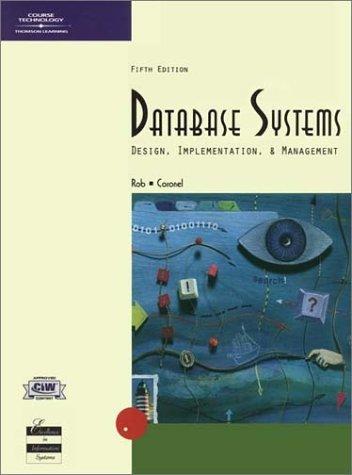Question
implement void dijkstra( int startingID ) #ifndef GRAPH_H #define GRAPH_H #include #include #include #include #include #include #include #include Vertex.h using namespace std; class Graph {
implement void dijkstra( int startingID )
#ifndef GRAPH_H #define GRAPH_H
#include
#include "Vertex.h"
using namespace std;
class Graph { vector
public: // Remove all vertices void clear() { _vertices.clear(); }
// Number of vertices in our graph int size() { return _vertices.size(); }
/** * Parses a single in from a dot file */ void parseDotfileLine( string line ) { smatch matched; regex newSubGraph ("\\s*(\\S+)\\s*->\\s*(\\S+)\\s*\\[.*?weight=\"*(\\S+?)\"*\\s*\\]\\;");
if( regex_match( line, matched, newSubGraph ) ) { string strconv = matched[1]; int srcid = ::atof(strconv.c_str()); strconv = matched[2]; int destid = ::atof(strconv.c_str()); strconv = matched[3]; double weight = ::atof(strconv.c_str()); //cout << "SrcID: " << srcid << " | DestID: " << destid << " | Edge Weight: " << weight << endl;
// Grow set of vertices if new high id is inserted or connected to int growVerts = max(srcid, destid); for( int i = _vertices.size(); i <= growVerts; i++ ) { Vertex* newVert = new Vertex(i); // Allocate the new vertex _vertices.push_back( newVert ); // Add vertex to the end of the list } _vertices[srcid]->addEdge(_vertices[destid], weight); } }
/** * Loads a single Graphviz-(limited) formatted dot file with a graph */ void loadDotFile( string filename ) { cout << " [d] Loading dot file: " << filename; ifstream ifs( filename ); string instr; while (getline(ifs, instr)) { parseDotfileLine( instr ); } cout << " - Done." << endl; }
/** * Returns stringified version of graph for viewing */ string to_string( bool with_edges = false ) { string ret = ""; for( auto vert : _vertices ) { ret += vert->to_string( with_edges ) + " "; } return ret; }
/** * Returns longest path (most edges) from a given startingID */ list
for( int currDestID = 0; currDestID < size(); currDestID++ ) { list
/** * Returns a list of the route from one ID to another */ list
list
Vertex* currVert = _vertices[ endingID ]; if( !currVert->get_path() ) return retPath; // Returns empty path because no route
path_stack.push(currVert); while( currVert->get_path() ) { currVert = currVert->get_path(); path_stack.push(currVert); } while( !path_stack.empty() ) { currVert = path_stack.top(); path_stack.pop(); retPath.push_back( currVert ); } return retPath; }
/** * Returns a string of the route for a given path */ string path_to_string( list
/** * Returns a string of the route from one ID to another */ string path_to_string( int startingID, int endingID ) { list
string ret = "Route from " + std::to_string(startingID); ret += " to " + std::to_string(endingID); ret += " (weight = " + std::to_string(_vertices[ endingID ]->getPathWeight()) + ") : ";
if( !path.empty() ) { while( !path.empty() ) { Vertex* currVert = path.front(); path.pop_front(); ret += std::to_string( currVert->getId() ); if( !path.empty() ) { ret += " -> "; } } } else { ret += "No path found "; }
return ret; }
/** * Get ID's weight */ double get_vertice_path_weight( int id ) { return _vertices[ id ]->getPathWeight(); }
/** * Undo a run of Dijkstra's */ void reset_vertices() { for( auto vert : _vertices ) { vert->setPathWeight( std::numeric_limits
// Dijkstra MA TODO: IMPLEMENT void dijkstra( int startingID ) { if( startingID == _last_startingID ) { // This is just to save time in finding paths return; // Already did this graph with that starting ID! } _last_startingID = startingID; reset_vertices(); // If you're doing a new startingID, clear out old dijkstra's results
// This builds a priority queue sorted by the path weights of the vertices in it (min heap) priority_queue
// End of hints - Dijkstra's Algorithm Goes here:
} // DONE WITH MA
};
#endif
Step by Step Solution
There are 3 Steps involved in it
Step: 1

Get Instant Access to Expert-Tailored Solutions
See step-by-step solutions with expert insights and AI powered tools for academic success
Step: 2

Step: 3

Ace Your Homework with AI
Get the answers you need in no time with our AI-driven, step-by-step assistance
Get Started


